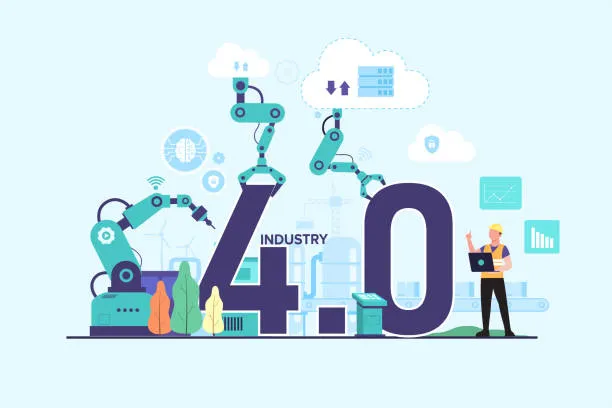There’s no question that the functions of supply chain management have evolved over the years.
As businesses continue to grow and become more complex, their supply chains need to adapt to keep up.
In this article, we’ll explore some of the key functions of supply chain management and discuss how AI can help to support them.
Supply Chain Management: What It Is and Why It Matters
Supply chain management is the process of ensuring that products and services are delivered on time, in the required quantity, and at the correct price to meet the needs of customers.

It includes everything from planning and coordination to tracking and managing inventory.
The purpose of supply chain management is to ensure that products and services are delivered to customers in a timely manner, meeting their needs in terms of quality, quantity, and price.
- This helps businesses save on costs while still providing the best possible service to their customers.
- Supply chain management can be divided into two main categories: upstream and downstream.
- Upstream refers to activities before a product or service ever reaches the customer’s hands.
- This includes things like planning and designing a product, sourcing materials, and manufacturing it.
- Downstream refers to activities after a product or service has been delivered to the customer.
This includes things like monitoring and managing inventory, handling customer complaints, and billing customers.
➣ Related Article
⦿ Supply Chain Management is important for several reasons.
First, it helps businesses save money by ensuring that products and services are delivered on time, in the required quantity, and at the correct price.
Second, it helps businesses provide better service to their customers by tracking down issues along the supply chain and resolving them as quickly as possible.
Finally, Supply chain management is a necessary component of creating a sustainable business model.
⦿ There are several different types of supply chains that businesses can choose from.
- The most common type is the linear supply chain, which is a one-way flow from supplier to customer.
- In contrast, the circular supply chain is a two-way flow in which both suppliers and customers participate.
- This type of supply chain is more efficient because it allows for better coordination and communication between all parties involved.
Supply chain management software can help businesses track and manage their inventory, customer complaints, and other aspects of their supply chain. It can also help businesses plan and coordinate their logistics and manufacturing processes.
Supply Chain Management Defined
Supply chain management is the process of managing a system that moves goods from suppliers to buyers in a safe, efficient, and compliant manner.

It encompasses the planning and execution of all aspects of the procurement, production, distribution, and delivery of goods to customers.
⦿ Some of the primary functions of supply chain management include:
- Planning and setting up logistics systems and processes to ensure timely delivery of products to customers
- Managing inventory levels, ensuring that enough stock is available when required but not overstock, which can lead to wastage or poor customer service
- Coordinating sales and deliveries with other departments within an organization such as marketing or engineering to ensure maximum efficiency and profitability
- Ensuring compliance with regulations such as ISO 9001: 2008 and other safety standards
- Coordinating efforts between suppliers and manufacturers to save on costs while meeting customer requirements
What Are The Functions of Supply Chain Management?
Supply chain management is the process of managing the flow of materials, services, and information through an organization’s supply chain.
- The purpose of supply chain management is to ensure that products and services are delivered on time, within budget, and of the correct quality.
- Supply chain management also ensures that employees are safe and productive while working in the supply chain.
- One of the primary functions of supply chain management is to ensure the flow of products from the manufacturer to the consumer.
- This process begins with procuring raw materials from suppliers, who then turn these materials into finished products.
After products have been produced, they must be transported to suppliers and retailers, who will then distribute them to consumers.
Supply chain management also includes coordinating production with demand in order to maintain a consistent level of product availability.
Supply chain management can also help organizations reduce costs associated with their supply chains.
By understanding how various elements of the supply chain interact, managers can optimize production processes and reduce waste.
In addition, by tracking inventory levels and forecasting future demand, organizations can make informed decisions about which products to produce.
Finally, using advanced logistics techniques such as Just-In-Time (JIT) ordering, managers can reduce inventory levels in their supply chains to improve efficiency.
The functions of supply chain management are manifold and depend on the specific needs of an organization.
⦿ However, some of the most common functions of supply chain management include:
- Planning and conducting research to understand the needs of the supply chain
- Sourcing raw materials and components from suppliers
- Transporting products to and from suppliers, retailers, and customers
- Coordinating production with demand
- Monitoring inventory levels and forecasting future demand
- Using advanced logistics techniques such as JIT ordering
What is The Main Function of Supply?
The main function of supply chain management is to ensure that the correct amount of products is available to meet the needs of customers.

This can be done by ensuring that the right items are being produced at the right time and in the right quantities and that the products are transported to their Destination in a safe and timely manner.
The Five Functions of Supply Chain Management
1. Planning and organizing the flow of goods from the producer to the consumer.
2. Determining the most efficient methods for moving goods and maximizing throughput.
3. Managing inventory and ensuring that it is in accordance with company policy.
4. Streamlining communication between all involved parties to ensure timely and accurate information sharing.
5. Ensuring the safety and quality of the products being delivered to consumers.
Elements of a Successful Supply Chain Management Plan
A successful supply chain management plan begins with an understanding of the functions of the supply chain.
Supply chain management is the process of managing a supply chain to ensure that products and services are delivered on time, in the correct quantity and quality, and at a cost that is acceptable to the business.
⦿ The Five Primary functions of a supply chain are:
Planning,
- Planning involves developing a strategy for Supply Chain Management, including identifying the needs of the business, defining the capabilities of suppliers, and estimating the resources needed to fulfill orders.
Coordinating,
- Coordinating involves working with suppliers to ensure that products and services are available when needed and that shipments arrive at the right destination in time for production.
Managing
- Managing includes allocating resources, setting standards and procedures, and measuring performance.
Monitoring
- Monitoring includes detecting problems early and taking appropriate action, such as issuing alerts or recalls.
Controlling
- Controlling includes maintaining an inventory of supplies and ensuring that products meet quality and safety standards.
The Next Step in creating a successful supply chain management plan is developing systems and processes to support the five primary functions.
Systems include operational policies, procedures, tracking tools, communication channels, and training programs.
Processes include planning, coordination, sourcing/ procurement, manufacturing/production, shipping/fulfillment, quality assurance/control, and finance/ accounting.
Supply Chain Management also requires effective communication between all parties involved in the supply chain.
Key Strategies For Optimizing The Supply Chain
When it comes to optimizing the supply chain, there are a few key strategies that companies need to keep in mind.

By ensuring that all parts of the supply chain are working together as a cohesive unit, businesses can ensure that products reach their destination on time and in perfect condition.
1. Streamline Operations:
- One of the first steps in optimizing the supply chain is streamlining operations.
- By consolidating multiple processes into one streamlined process, companies can reduce the number of unnecessary steps and improve communication between various departments.
- This will help to improve overall efficiency and quality control.
2. Implement Lean Manufacturing Techniques:
- Another key strategy for optimizing the supply chain is implementing lean manufacturing techniques.
- Lean manufacturing focuses on reducing waste and improving efficiency through proactive measures such as Six Sigma analysis and elimination of unnecessary steps in production.
- This will help to ensure that products reach consumers in a timely manner with minimal waste accumulation.
3. Coordinate with Upstream Suppliers:
- Coordinating with upstream suppliers is another key strategy for optimizing the supply chain.
- By working closely with these suppliers, businesses can ensure that they are getting the best possible products at a reasonable price.
- This coordination will also improve communication between different departments, making sure that products reach their destination in perfect condition.
4. Educate Employees:
- One of the most important steps in optimizing the supply chain is educating employees about the importance of the process.
- By ensuring that employees are aware of all aspects of the supply chain, businesses can reduce the number of mistakes made during production.
- This will help to ensure that products reach consumers in a timely manner with optimum quality.
5. Implement a Quality Management System:
- One of the most important steps in optimizing the supply chain is implementing a quality management system.
- This system will help to ensure that products meet all required standards, from quality control throughout the production process to final product testing.
By implementing these key strategies, businesses can optimize the supply chain and ensure that products reach their destination in perfect condition.
What Are The 7 Supply Chain Functions?
Supply chain management is a process that helps to ensure the efficient flow of goods and resources throughout the entire production process.
There are several different functions that are involved in supply chain management, and each one plays an important role in ensuring the success of the overall process.
◉ The first function of supply chain management is inventory management.
- This involves determining the correct level of inventory for the current level of demand.
- It also involves ensuring that the inventory is maintained at the correct level and that it is used efficiently.
◉ Another important function of supply chain management is transportation planning.
- This involves determining which transportation mode will be most efficient in moving goods to their final destination.
- It also involves monitoring transportation costs and making sure that they remain within budget.
◉ The final function of supply chain management is delivery planning.
- This involves ensuring that goods are delivered to their destination on time, in the correct condition, and at a fair price.
- It also involves tracking delivery milestones and penalizing suppliers if they fail to meet deadlines.
What Are The Three Most important Functions in Supply Chain Management?
⦿ The Three Most important functions of supply chain management are ensuring the accuracy of Here:

- Product information
- Managing inventory
- Ensuring timely deliveries.
Meeting these goals helps ensure that products reach their intended customers in a timely and efficient manner, which in turn helps businesses maximize profits.
How Supply Chain Management is Used in Business?
Supply chain management is a process that helps businesses manage the flow of goods from suppliers to customers.
It involves setting up systems to track products throughout the supply chain, ensuring that products meet quality standards and are delivered on time.
Supply chain management can help businesses reduce costs and improve the efficiency of their operations.
By tracking products throughout the supply chain, companies can ensure that they are getting the best possible deal for their products.
This can save companies money on supplies, as well as on shipping costs.
Supply chain management also helps businesses to ensure that their products are safe to use.
By tracking products throughout the supply chain, companies can make sure that they are not receiving products that may be dangerous or illegal.
- This can protect both businesses and consumers from potential harm.
- In addition to these benefits, supply chain management can help companies build a strong relationship with their suppliers.
- By working closely with these businesses, companies can get access to new and innovative products more easily.
- This relationship can lead to increased sales and better customer service down the line.
What Are The Four 4 Stages of Supply Chains?
Supply chain management is the process of managing a company’s relationships with its suppliers and partners to ensure the timely and effective delivery of products to customers.

⦿ There are four stages that a supply chain typically goes through planning, procurement, production, and delivery.
1. Planning Stage,
In the Planning stage, suppliers and manufacturers work together to develop a plan for supplying the company’s products. This involves identifying what products the company needs and how much of each product each supplier can produce.
2. Procurement Stages
In the Procurement Stage, the company decides which suppliers to use and how much money to spend on each supplier. This is often done using bidding processes or auctions.
3. Production Stages
During production, suppliers produce the products that were ordered in the procurement stage. If there are any shortages or errors in the products produced, then this will be reflected in the prices of these products.
4. Delivery Stage
Finally, in the Delivery Stage, the products that were produced in the production stage are delivered to the company’s customers. This can be done directly by the supplier or through an intermediary such as a distribution center.
Supply Chain Management Criteria
In order to effectively manage a supply chain, businesses must first understand the key criteria that define it. Supply chain management is the process of planning, organizing, and directing the flow of goods from suppliers to consumers.
⦿ The following are four key functions of supply chain management:
1. Planning: In order to ensure that a reliable and efficient supply chain exists, businesses need to plan their production in advance. This involves identifying the necessary ingredients and resources, as well as predicting future demand.
2. Coordination: A good supply chain requires effective coordination between all parties involved. This includes ensuring that suppliers are able to meet customer demands in a timely manner while also managing inventory levels.
3. Forwarding: Goods must be delivered to customers in a timely fashion, which is essential for maintaining customer satisfaction. Forwarding services can help minimize disruptions along the supply chain and protect assets.
4. Control: Supply chains must be controlled in order to prevent disruptions and ensure customer satisfaction. This involves monitoring inventory levels and ensuring that deliveries arrive on time.
⦿ Given these key functions, supply chain management can be divided into three main categories: operational, tactical, and strategic.
‣ Operational Supply Chain Management is responsible for the day-to-day operations of a supply chain. This includes managing inventory, shipping goods, and ensuring customer satisfaction.
‣ Tactical Supply Chain Management focuses on specific tasks or goals within the supply chain. For example, it may involve optimizing shipping routes or managing supplier relationships.
‣ Strategic Supply Chain Management is responsible for the overall planning and direction of the supply chain. It includes developing long-term strategies and planning for future growth.
Supply Chain Management Importance
Supply chain management is one of the most important functions of a business.
It encompasses the entire process from manufacturing to distribution, and it is essential for companies that want to stay competitive.
- In this article, we will look at the importance of supply chain management and discuss some of the key aspects of its operation.
- First and foremost, supply chain management is essential for ensuring the timely delivery of products to customers.
- If products are not delivered on time, customers may become frustrated and may switch to competitors.
- In addition, delays in shipping can lead to lost sales and damaged relationships with customers.
Supply chain management also helps businesses optimize resources and manage inventory in order to ensure that they are always able to meet customer demand.
Another important function of supply chain management is ensuring the accuracy of product information.
- This information includes product specifications, material composition, and manufacturing processes.
- If incorrect information is circulated throughout the supply chain, it can lead to quality issues and even recalls of products.
- Furthermore, inaccurate product data can impact business operations in other ways, such as billing and accounting procedures.
- Finally, supply chain management is essential for protecting company assets. If a shipment arrives damaged or incomplete, it can cause significant damage to the business.
In addition, inaccurate or incomplete data can lead to costly mistakes when billing and accounting procedures are carried out.
By ensuring that all information related to products is accurate and up-to-date, supply chain management protects company assets and helps ensure that operations run smoothly.
The Goal Of Supply Chain Management
Supply Chain Management is the process of managing the flow of materials and products from the producer to the consumer.

- The goal is to ensure that products are delivered on time, in the correct quantity, and at a price that meets customer expectations.
- Supply chain management also includes ensuring the safety of products during transportation and storage.
- Supply chain management involves a number of different functions, including procurement, manufacturing, logistics, distribution, and marketing.
- Procurement is responsible for finding the best supplier for a product or service. Manufacturing ensures that the products are delivered to meet customer specifications.
- Logistics ensures that products are transported from the producers to the consumers in an efficient fashion.
Distribution delivers products to retailers and final consumers. Marketing ensures that customers know about the availability of products and can find information about pricing and product specifications.
FAQ {Frequently Asked Question}
What is The Main Function of Supply?
The main function of supply chain management is to ensure that the correct amount of products is available to meet the needs of customers.
This can be done by ensuring that the right items are being produced at the right time and in the right quantities and that the products are transported to their destination in a safe and timely manner.
What Are The Functions of Supply Chain Management?
Supply chain management is the process of managing the flow of materials, services, and information through an organization’s supply chain.
- The purpose of supply chain management is to ensure that products and services are delivered on time, within budget, and of the correct quality.
- Supply chain management also ensures that employees are safe and productive while working in the supply chain.
- One of the primary functions of supply chain management is to ensure the flow of products from the manufacturer to the consumer.
- This process begins with procuring raw materials from suppliers, who then turn these materials into finished products.
After products have been produced, they must be transported to suppliers and retailers, who will then distribute them to consumers.
Supply chain management also includes coordinating production with demand in order to maintain a consistent level of product availability.
Supply chain management can also help organizations reduce costs associated with their supply chains.
Key Strategies For Optimizing The Supply Chain
When it comes to optimizing the supply chain, there are a few key strategies that companies need to keep in mind.
By ensuring that all parts of the supply chain are working together as a cohesive unit, businesses can ensure that products reach their destination on time and in perfect condition.
1. Streamline Operations:
- One of the first steps in optimizing the supply chain is streamlining operations.
- By consolidating multiple processes into one streamlined process, companies can reduce the number of unnecessary steps and improve communication between various departments.
- This will help to improve overall efficiency and quality control.
2. Implement Lean Manufacturing Techniques:
3. Coordinate with Upstream Suppliers:
4. Educate Employees:
5. Implement a Quality Management System:
What Are The 7 Supply Chain Functions?
Supply chain management is a process that helps to ensure the efficient flow of goods and resources throughout the entire production process.
There are several different functions that are involved in supply chain management, and each one plays an important role in ensuring the success of the overall process.
◉ The first function of supply chain management is inventory management.
◉ Another important function of supply chain management is transportation planning.
◉ The final function of supply chain management is delivery planning.
What Are The Four 4 Stages of Supply Chains?
Supply chain management is the process of managing a company’s relationships with its suppliers and partners to ensure the timely and effective delivery of products to customers.
1. Planning Stage,
In the Planning stage, suppliers and manufacturers work together to develop a plan for supplying the company’s products. This involves identifying what products the company needs and how much of each product each supplier can produce.
2. Procurement Stages
3. Production Stages
4. Delivery Stage
1 Related Term
- What is WDCW Ap Gov in Management information System?
- Environmental Management System At TCS – The Complete In-depth Guide
- What Are The Primary Business Benefits of An ERP System?
- What is Capital in Business?
- What is Shares in Business?
- What is Modern Marketing?
- How To Scale Up A Business: A Complete Guide?
- What is Cash Market?
- Difference Between International Business and Domestic Business
- What is a 21st Century Fastest Growing Business?
- Why The 3 Ps Of Business Are Still Progressing?
- What is The Heliocentric Approach And Why Did Ptolemy Use it?
- What Are The Main Principles of The Geocentric Model?
- What Are The Approaches of International Business?
- What is Regulated Market?
- What is LBR Marketing Limited Company?
- Which of The Following is True For Supply Chain Management?
- Eco Resort Management Practices Reading Answers
- What is The Role of Business Analyst?
- Characteristics of Business Economics
- How To Sell Old Coins In International Market?
- What is Geocentric Approach?
- How Many Types of Approaches Are There in International Business?
- What is The Heliocentric Approach And Why Did Ptolemy Use it?
- How to Market Yourself?
- How Many Types of Approaches Are There in International Business?
- Best Tips For A Risky Business Costume Ideas
- What are Finance Charges?
- What is Nifty Bank Graph?
- Smart Waste Management
- Who Biomedical Waste Management?
- Finance Wheels And Tires
- What is commodity market?
- Is Marketing A Good Major?
2 Conclusion of Functions of Supply Chain Management
Supply chain management is the process of organizing and coordinating the flow of materials and products between different stages in a manufacturing or distribution system.
It is an important part of ensuring that products are produced on time, costs are minimized, and quality is maintained.
In order to effectively manage your supply chain, you will need to have a good understanding of its various components.
This article provides an overview of the main functions of supply chain management, as well as some tips for effective implementation.
‣ I hope friends, through this article, I have given you information about Functions of Supply Chain Management You must have got the information. So share your suggestions with us.
















